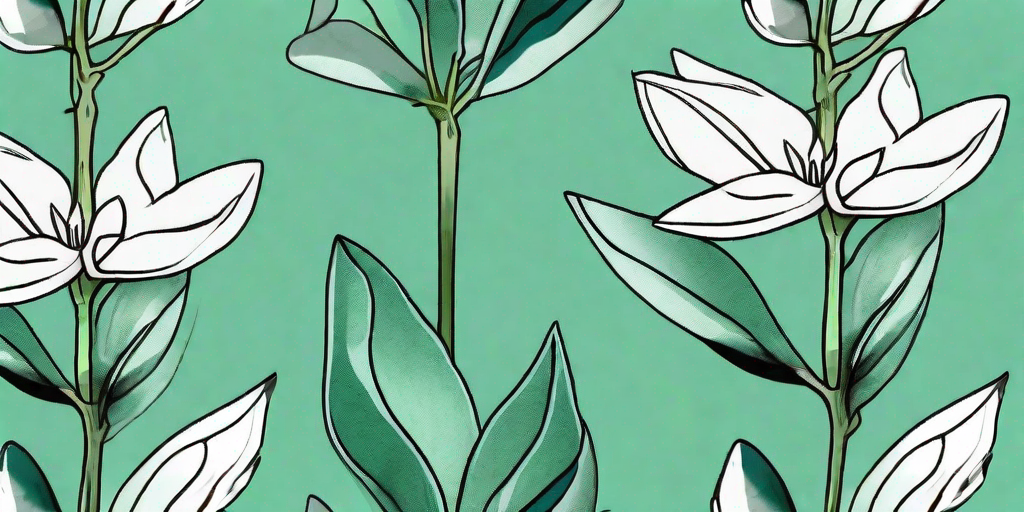
If you're a plant parent with a penchant for the peculiar, you've likely stumbled upon the Hoya plant. This waxy, flowering plant, also known as the Wax Plant, Porcelain Flower, or the Hindu Rope Plant, is a favorite among indoor gardeners for its resilience and unique aesthetic. But let's face it, sometimes, our green thumbs might need a little guidance to transform our Hoya from a boring botanical to a blooming beauty. Fear not, fellow foliage fanatics, we're here to help you navigate the verdant voyage of Hoya horticulture.
Understanding Your Hoya: A Botanical Background
Before we dive into the nitty-gritty of Hoya care, let's take a moment to appreciate the rich history of this plant. Native to South-East Asia and Australia, the Hoya plant is a member of the Apocynaceae family. It's named after Thomas Hoy, a gardener to the Duke of Northumberland at Syon House in Middlesex, England. Hoy was known for his green thumb, but we can't help but wonder if he ever struggled with his namesake plant like some of us do.
There are over 200 species of Hoya, each with its own unique characteristics. Some are vining, others are shrubby, and some even resemble succulents. Regardless of the variety, all Hoya plants share a love for warm, humid environments, much like a tropical rainforest or a steamy bathroom after a long shower. Now that we've covered the basics, let's get down to the juicy details of Hoya care.
The Art of Hoya Care
Lighting the Way
First things first, let's talk about light. Hoyas are big fans of bright, indirect light. They're like that friend who always insists on sitting in the shade at the beach - they love the sun, but they don't want to get too close. A north or east-facing window is ideal, but if that's not possible, a shaded south or west-facing window will do.
But what if you live in a cave, or your only window faces a brick wall? Fear not, my photosynthesis-deprived friends. Hoyas can tolerate lower light conditions, but they may not flower as profusely. You can also consider supplementing with a grow light, which is like a sun-tanning bed for your plant.
Watering Woes
Watering is where many plant parents go wrong. Hoyas, like your introverted friends, need some alone time. They prefer to dry out between waterings, so resist the urge to water them every time you pass by. A good rule of thumb (or should we say, green thumb) is to water your Hoya when the top inch of soil feels dry to the touch.
Overwatering can lead to root rot, which is as nasty as it sounds. If your Hoya's leaves start to yellow or drop, it might be a sign that you're loving it a little too much. Remember, sometimes, less is more.
Feeding Frenzy
Like us, Hoyas need food to thrive. But don't worry, they're not picky eaters. A balanced, water-soluble fertilizer applied every two to four weeks during the growing season (spring and summer) will keep your Hoya happy. Just remember to cut back on the fertilizer during the dormant winter months, as your Hoya will be taking a well-deserved rest.
And there you have it - the basics of Hoya care. But wait, there's more! Let's delve into some advanced tips for those of you who want to take your Hoya horticulture to the next level.
Advanced Hoya Care: From Green Thumb to Plant Pro
Propagation Station
Propagation is the process of creating new plants from an existing one. It's like cloning, but without the ethical dilemmas. Hoyas are relatively easy to propagate. All you need is a healthy stem cutting, some potting mix, and a little patience.
Simply cut a healthy stem just below a node (the point where the leaf meets the stem), remove the lower leaves, and plant it in a pot with well-draining potting mix. Keep the soil slightly moist, and with a little luck, you'll have a new Hoya in a few weeks.
Blooming Brilliance
One of the joys of owning a Hoya is witnessing its spectacular bloom. But getting a Hoya to flower can be a bit of a challenge. It requires just the right balance of light, water, and nutrients. But don't worry, with a little persistence and a lot of love, you can coax your Hoya into blooming.
One thing to remember is never to remove the spent flower stems, also known as peduncles. Unlike other plants, Hoyas will continue to flower from the same peduncle year after year. So resist the urge to tidy up, and let your Hoya do its thing.
FAQs: Your Hoya Queries Answered
- Why are the leaves on my Hoya yellowing?
Yellowing leaves can be a sign of overwatering. Cut back on the H2O and check that your pot has adequate drainage.
- Why isn't my Hoya flowering?
Flowering requires the right balance of light, water, and nutrients. Make sure your Hoya is getting enough light, and consider using a bloom-boosting fertilizer.
- Can I grow a Hoya outdoors?
While Hoyas are typically grown as houseplants, they can be grown outdoors in USDA zones 10 and 11. Just make sure to protect them from frost and intense sunlight.
And there you have it, folks! With these tips and tricks, you'll be well on your way to transforming your Hoya from boring to blooming. Remember, plant care is a journey, not a destination. So sit back, relax, and enjoy the ride. Happy gardening!















